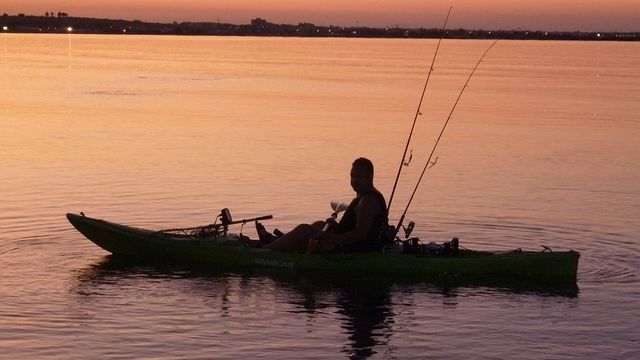
7 Things To Know Before Buying A Fishing Kayak
Fishing kayaks are the hottest thing since sliced bread in the fishing industry right now. From fresh to salt water and north to south – you can’t get in and out of a tackle shop, sporting goods store, or online forum without seeing something related to chasing little finned creatures from a fishing kayak.This surge in kayak fishing makes sense too, kayaks are more stable than canoes, portable, and much less expensive than traditionally powered fishing boats. They’re also very “small-water” friendly, which gives anglers in urban areas countless more access points.In response to their popularity, the kayak industry has exploded – there are now DOZENS of manufacturers producing quality, fishing specific kayaks designed for everything from the smallest creeks to the open ocean.Competition is great for the consumer, but it can also lead to confusion – how does one sort through all the options on the market to find the best kayak for their needs?The first step is to determine precisely what those needs are, and the following tips should help you out.
1. Length Matters For Fishing Kayaks
A fishing kayak’s length has a dramatic impact on how it will perform once on the water. The first step to determining what length you need is to consider the type of water you will use it on. As a rule, shorter kayaks (less than 11 feet) are more maneuverable, and longer kayaks (longer than 12 feet) are much faster. If your local waters consist of mainly small ponds, creeks, and backwaters – opt for maneuverability rather than speed. If you’re fishing bigger lakes, rivers, or the ocean – go with a longer model. It’s also important to factor your body size into the equation. If you’re 6 foot 5, 290 pounds – you probably don’t want to go much under 11 feet, regardless of the waters you fish.
2. Kayak Stability Is Key
While the kayaks of yesteryear were notoriously tippy and unstable – many of today’s fishing machines are stable enough to allow standing, something previously unheard of. As great as stability is for fishing, too much causes kayaks to be less maneuverable and more difficult to paddle efficiently. Opt for a wider, more stable model if you’ve got a big body, plan on standing up to fish, or frequent small ponds and rivers. Narrower, less stable models paddle easier, and are ideal for trollers, and anglers that cover lots of water in a day.
3. Maximize The Storage
As fishermen, we’ve got the market cornered on having too much gear. For that reason, it’s important to find a yak that has enough room for all the necessities. Some models have integrated storage, and even live wells. Others have areas molded for external storage like milk crates and coolers. Sit on top models often have molded internal hatches, whereas sit-in models feature more open space in the hull for storing gear. Make a mental list of all the things you’re likely to carry with you while fishing, and visualize where you would put everything before you buy.
4. Keel Or No Keel?
A keel is a “fin” shaped piece of plastic that sticks down into the water from a kayak’s hull and improves tracking and speed. Some kayaks have integrated keels, some have retractable keels, and others have none. Opt for a keeled model if you’re fishing open water, trolling, or expect to stay in fairly deep water, as it will make you a more efficient paddler. Go without if you’re floating shallow rocky rivers, fishing in close quarters, or like to fish standing up.
5. Room For Electronics?
Many models of specific "fishing kayak" like the Lifetime Angler Kayak on the market are built to accommodate modern electronics. If you fish lots of lakes or the ocean, this may be something you want to consider. If you’re floating shallow rivers, you can probably do just as well without.
6. Fishing Kayak Portability
The downside of all the advances in fishability, stability, and storage in today’s kayaks is that they are heavier than ever. Take this into consideration when doing your research. If you plan to frequently portage your fishing kayak into unknown (and unfished) waters – you probably want something that’s light and easy to drag down a dirt path to the lake. If you’re going straight from the truck to water – feel free to load up on gear and accessories. In general, when purchasing a fishing kayak, the sit on top models are much heavier than sit- in models.
7. Anchor Or Drift
Adding a traditional or electronic anchoring system like the PowerPole Micro can be a huge benefit if you fish with your kayak in open water, or even in backwaters where you may want to anchor up to fish. However, these things also add weight, and can be unnecessary for anglers that like to drift with the current while fishing. Do your research, as there are several anchoring methods available to fit all budgets.
Updated May 14th, 2020 at 6:18 AM CT
